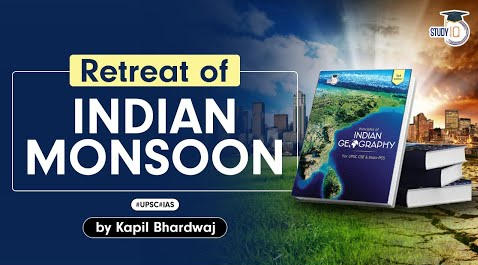Table of Contents
Retreating Monsoon and The North-East Monsoon
- The months of August and September mark the reduction and cessation of the rainfall by the southwest monsoon.
- The low-pressure trough that was built in the northwest part of India starts to disintegrate and there is an eventual shift to the equatorial region towards the end of September.
- The low pressure zone formed gets weakened because of two reasons:
- The apparent movement of the Sun towards the equator
- The lowering of the temperature due to the monsoonal rains.


- Till the September equinox(23r Sept.), the STHPB starts moving towards the 30°N latitude region.
- The anti-cyclonic condition starts prevailing over the cyclonic conditions.
- The ITCZ also recedes south of the equator.
- The conditions continue from October till mid-December and are regarded as the retreating monsoon.
- The monsoon winds follow the last reach first withdraw pattern.

Winter Season
- By the winter solstice in December(22nd December), the sun vertically shines over the tropic of Capricorn.
- The low temperatures average around 20°celcius, which runs as an isotherm across the tropic of cancer.
- The reasons for excessive cold during this season are:
- The northern plains are far from the moderating effect of the sea.
- The cold wave snowfall in the nearby Himalayan ranges reduces the temperature drastically.
- Western Disturbances originating around the Mediterranean.

- The Peninsular region of India does not have any well-defined cold-weather season because of the moderating influence of the sea and its proximity to the equator.
- The subtropical jet streams play an important role in guiding these disturbances towards the Indian subcontinent.
Indian Geography (Fundamental) | Free PDF






















 WhatsApp
WhatsApp